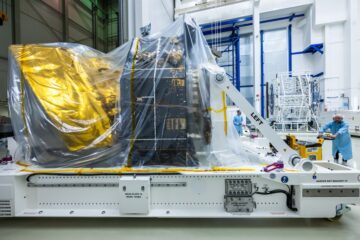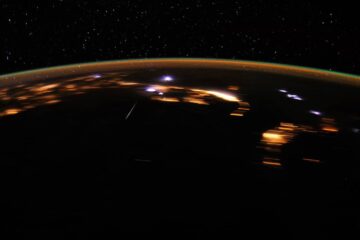This week our Astronomy & You series takes a look at Electronic Imaging Detectors and their effect on our lives. This piece was written by Ana I. Gomez de Castro. Ana is a full professor in Astronomy and Astrophysics and member of the Mathematics Faculty in the Universidad Complutense de Madrid (UCM). Ana is also on the steering committee of the International Astronomical Union’s Division B (“Facilities, Technology, Data Science”).
The pictures we all take and share using our mobile telephones and digital cameras have their origin in space research. This has been driven by the needs of astronomers using the Hubble Space Telescope to be able to take pictures of distant objects in the cosmos and then transmit them back to Earth.

Charge coupled devices (CCDs) convert light into electronic signals that can be digitally processed. They are ubiquitous in mobile phones, tablets, portable computers, web and security cameras. However, they originated in the late 60’s to cope with the challenges of space research and the needs to transmit to Earth images obtained from in-orbit spacecraft.
The CCD concept was originated early in the 70’s and was incorporated for the first time in a space probe in 1976: the KH-11 reconnaissance satellite from the American National Reconnaissance Office. It used an array of 800 x 800 pixels for imaging.
By that time, CCDs were being tested as astronomical detectors however, their use did not become widespread until the decision was made to incorporate CCDs into the first generation of instruments for the Hubble Space Telescope (HST).

The Wide Field and Planetary Camera detector of the Hubble was a CCD camera. Its implementation and subsequent use drove a revolution in the field due to the technological resources involved and the development of precise and well-defined procedures for the calibration and processing of the data.
Nowadays, CCDs are the detector of choice in astronomical observatories worldwide, whether in-space or on-ground, and working from the infrared to X-rays.
CCDs are also implemented in amateurs’ telescopes and have even made feasible astronomical observation from within cities. The heavy light pollution in cities virtually prevents viewing of the sky to the bare human eye. Our brains process the images obtained by our eyes at a rate of about one image per 20 milliseconds. The richness of the sky is lost to our perception under the bright umbrella of cities. CCDs allow stacking together thousands of images and, together with digital processing and filtering, the increased sensitivity has opened access to the sky for people in cities.

Most recently, CCDs are now being substituted by their close relatives, CMOS (Complementary Metal-Oxide Semiconductor) detectors. Both share the ability to generate digital images. The protocols to store and transfer the digital images were stablished with the first generation, the CCDs.



0 Comments